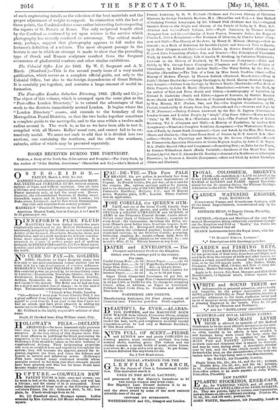Points of Contact between Science and Art. By His Eminence
Cardinal Wiseman. (Hurst and Blackett.)—This lecture, which was delivered before the Royal Institution on the 30th of January last, is not a very striking production from any point of view. Its contents and general purpose may be very briefly stated. Cardinal Wiseman commences by, on the one hand, extending the term " Science " so as to include- " whatever knowledge has come to man as the result of investigation by thought, calculation, and experiment," and, on the other, limiting the term "Art" to the three fine arts of painting, sculpture, and architecture. The principal advantage which painting has derived from science is a knowledge of perspective ; and she may, perhaps, hope to learn some- thing from chemistry in the way of the discovery of new colours. Sculptors may make good use of anatomy, ethnography, and such minor sciences as the knowledge of horseflesh. Architects are indebted to science for the law of harmonious proportions, and for the knowledge of such engineering details as the selection of the best materials and the proper adjustment of weight to support. In connection with the last of those points, the Cardinal relates some rather interesting facts respecting the repairs of St. Peter's at Rome. The only reciprocal benefit cited by the Cardinal as conferred by art upon science is the service which photography has recently rendered to astronomy. The critical reader may, perhaps, suggest that photography appears to fall under the lecturer's definition of a science. The most eloquent passage in the lecture is one in which an attempt is made to show that the prevailing type of Greek and Roman sculpture resulted from the frequent occurrence of gladiatorial combats and other similar exhibitions.































 Previous page
Previous page